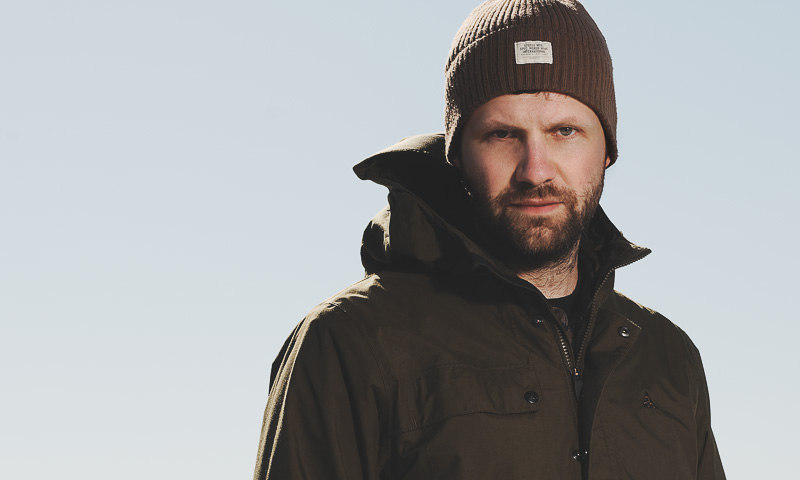Shots Fired: Davey Wilson’s Fully Immersed Photography
Art
In 2019, we can sometimes take talented professional photography for granted, with social media feeds filled with amazing photos from some of our personal favorites as well as friends and family who are handy with a cam, it’s easy to become numb to all of the skill that is out there. Davey Wilson’s photography gripped my attention in a unique and out-of-the-ordinary way. With intense subject matter like rugby, intimate athlete portraits and shots that make you think beyond the image itself, Wilson takes an approach all his own to his work, and it shows in his many portfolios. Wilson’s story is as unique as his photography with many elements coming together to put him in the position he is in today.
SLUG: Where are you from and when did you get your start in photography?
Wilson: I was born in Arizona but raised mostly in England and Italy. Art has been a part of me all my life. At age 12, I remember being brought into the principal’s office with my parents and my art teacher. I thought I was in trouble. “We have a problem here—your son is unteachable,” he said. “What I mean is your son should be teaching the class.” From then on till I graduated high school, I was in an independent art studies class—graded on total output versus quality of output. Photography was the last medium of art I worked with, not actively shooting until age 19, but it’s my favorite because it’s real, raw and relatable. You can communicate so much to the viewer in a split second!
SLUG: A lot of your photos involve motion and action. Was that always your favorite way to shoot?
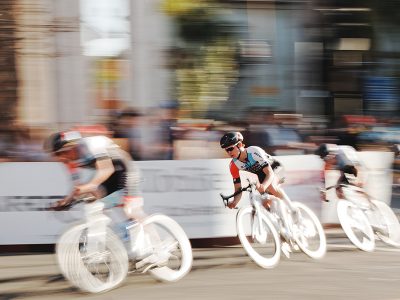
Wilson: Actually, I got my start shooting portraits of my friends, as well as street photography in New York, and A LOT of music photography. I skipped college after being recruited by Columbia Records at age 20, so working in the music industry naturally shifted my focus to music for many years.
Sports came to me later. A friend of a friend played for New York Knights (Rugby League), and rugby always attracted me as a subject to shoot for the intensity and the brotherhood it entails. My British grandad played rugby, so it really connected me the culture I grew up in. It’s an epic sport to shoot—it’s like war! There’s nothing better than the feeling when you nail a long carry sequence, a brutal ruck or the perfect dive try, and there’s always a great story to tell!
About a year after I started shooting rugby, a friend recruited me to shoot for Hagens Berman Axeon Cycling Team after seeing some portraits I shot for A$AP Rocky back in NY. I’m actually in Sacramento, shooting the Amgen Tour of California with them as we speak.
I love covering cycling equally because of the sheer speed combined with such epic backdrops. It’s a beautiful sport, but can be equally brutal when riders crash.
Today, most of my focus is split between these two sports, but I’m always looking to expand!
SLUG: Did playing sports get you into photography, or what was the tipping point for branching those two worlds together?
Wilson: Although I’m a runner, I never got to play team sports much, but I use that to my advantage as a sports photographer because it gives me a fresh perspective and allows me a see the big picture and focus on what looks aesthetically great. I’m also not your standard sports photographer, stuck in their box at the side of the pitch. I get completely immersed in the teams I work with, and behind-the-scenes coverage is as important to me as the action—aiming to give viewers a unique perspective so they feel a part of it all.
SLUG: Your client list on your website is pretty extensive. What have been some if your favorite projects? What have been some obscure projects or “pinch me” type of moments in your career?
Wilson: Thanks, I actually need to update that list! I think one of my favorite projects was documenting ultra-runners on a 50-mile race for The North Face, since it pushed me a little outside my comfort zone since it’s not a sport I normally cover, and that’s a really powerful thing.
I’ve actually been trying to link up with one of the runners I met on that shoot and hope to return to ultra-running soon. It’s just a matter of finding dates where I’m not already booked and figuring out logistics.
SLUG: You seem to shoot a lot of portraits that come off powerfully. Do you direct these shoots, or is it more of a candid lifestyle type of process to get those shots?
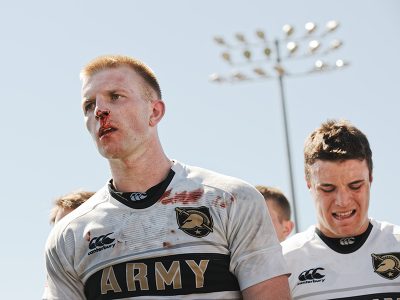
Wilson: Anything you see shot with natural light on location is completely candid and captured in the moment. After working with athletes for a while, they forget I’m there, and that’s when those images get really good!
My images with strobes are the opposite—über-produced and directed.
It’s two completely different ways of working, but I love both equally for different reasons!
SLUG: Rugby can be a rough game. Have you ever suffered any collateral damage from shooting?
Wilson: Yeah, I’m actually recovering from a hand injury after breaking three out of five knuckles in my left hand from a stray rugby ball. Thankfully, I’m right-handed, and it hasn’t slowed my work schedule one bit.
SLUG: What skills need to be considered in getting quality motion shots?
Wilson: Focus, timing and being a really keen observer are all super important in sports. Having extensive knowledge of the sport can be a gift for following and predicting the action, but also a curse because you might miss the big picture that comes from having a fresh perspective.
SLUG: In the Instagram and social media age, it seems everyone is a photographer and or model of sorts. What are some pros or cons to this movement?
Wilson: Instagram, social media and the internet can be great tools in helping photographers reach more people and leads for jobs. Can it make photography more disposable? Sure, but it’s on us as artists to find a way to harness these platforms to our own benefit.
SLUG: Was becoming a professional photographer always a goal, or did something lead you into this by accident?
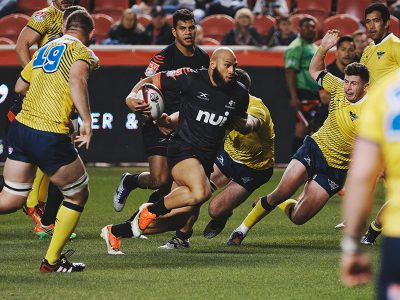
Wilson: My first long-term flat mate in New York, Daragh McDonagh, is probably to thank for planting the seed and encouraging my photography career. He’d just wrapped his tenure as full-time assistant to the late Richard Avedon and was making his mark as a photographer in music at the time (and went on to be a great photographer in his own right). I still had my day job at Columbia Records, but would regularly shoot anything and everything I’d see in NY. I recall working on images at our tiny West Village flat one day, and he walked by noticing my work and asked me, “Why aren’t you a photographer?” I told him I’d never even thought of it, only for him to reply something like, “You can’t teach people to see the way you do—you should shoot more.”
I continued shooting for the love of it, and about a year later, I received a call that pop punk band Metro Station needed a photographer to shoot some promos in Brooklyn in the off-time around their video shoot. I’d never shot a posed portrait shoot before, but I winged it, their record label loved the work, and everything snowballed from there.
Some people say I got lucky, but I don’t feel that way at all. If anything, it put a fire under my ass to learn everything I could about light while working endlessly to improve my craft and refine my skills. You can be in the right place at the right time, but you still got to bring the talent to have any kind of staying power.
SLUG: What are some current or future projects you are excited about? What about photography in general gets you excited about the future?
Wilson: I never talk about future work because I don’t want to jinx it, so [SLUG] readers will have to wait and see.
What gets me excited about future of photography is all the advancements that offer us photographers the freedom to capture moments like never before. I remember years ago photographers being fearful of the transition from film to digital imaging as the new standard, but I’ve always embraced change.
SLUG: Who are some of your favorite sports teams? Do you ever find yourself shooting a team that you are maybe not necessarily a direct fan of? If so, does getting to know the team turn you into a fan?
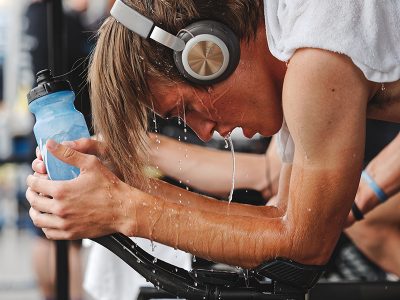
Wilson: That’s easy. Manchester City (soccer), Wigan Warriors (Super League), Northampton Saints (Premiership Rugby) and England Rugby. In cycling, Hagens Berman Axeon Cycling team, and not because of my work with them, but because of the raw talent and excitement they’ve brought to the sport.
Honestly, though, I don’t need to be a fan to cover any sport because it’s not about that for me. It’s about telling stories of athletes—their struggle, their failures, their victories and documenting the growth. There’s something truly human about sports stories that we can all relate to, and that’s why I love covering it as a subject. For this reason, I’m always actively looking to cover sports I haven’t worked in before.
I’m not one to get star-struck—and I don’t know if covering a specific team turns anyone into a fan per se—but for me, a great deal of respect develops, and I sincerely want them to succeed.
SLUG: What are the technical aspects to shooting motion/action? What equipment/settings do you use to make these images possible?
Wilson: Honestly, timing and one’s ability to observe is more important than anything. The artificial intelligence–powered autofocus tracking they’re putting in today’s sports cameras is an incredible feat, but it’s no replacement for the skills of a sports photographer. Most of us still opt for the simplest AF modes over the tracking, so the AF sensor in your camera needs to be swift and accurate.
As far as gear goes, I shot Canon followed by Sony for many years. I really loved my Sony kit, but I was shooting a bike race in Breckenridge [Colorado] at 10,000 feet of elevation with a full kit on my back (probably 30 lb.), and I remember thinking, “There’s got to be a better way!”
This lead me to Olympus & Micro Four Thirds, a format I turned my nose up at for years because of the small image sensors, but never was I so glad to be proven wrong! It cut the weight of my kit in half, and it’s liberated me to take images I could never pull off before, thanks to its class-leading image stabilization combined with ultimate portability and weatherproofing!
In my bag right now are two Olympus OM-D E-M1X bodies (Olympus’ new professional sports camera) with boatload of glass including their m.Zuiko 300 mm. f/4 (600 mm. equivalent), 40–150 mm. f/2.8 (80–300 mm.), 7–14 mm. f/2.8 (14-28 mm.), 12–40 mm. f/2.8 (24-80 mm.), 17 mm. f/1.2 (35 mm. equivalent), 25 mm. f/1.2 (50 mm.) and 45 mm. f/1.2 (90 mm.).
E-M1X is just so solid & incredibly reliable! Wherever you place that point is in focus instantly, and the ergonomics are second to none—so comfortable to hold even on long shoots. It’s fully weather-sealed to the point of being IPX-rated, freeze-proof and dustproof so you can use it in the Arctic, Death Valley or through torrential downpour without ever running for cover! I highly recommend it to anyone bent on covering sports twho doesn’t want to be weighed down with heavy, bulky, full-frame glass. With E-M1X,you can comfortably shoot 600 mm. handheld.
If you’re on a budget, then check out E-M1 Mark II, its sibling, which still performs amazingly well but in a much smaller form factor. I use that one a ton for behind-the-scenes documentary photos with F1.2 primes.
SLUG: Can you give a breakdown of some of your favorite or most used gear when shooting action as opposed to stills?
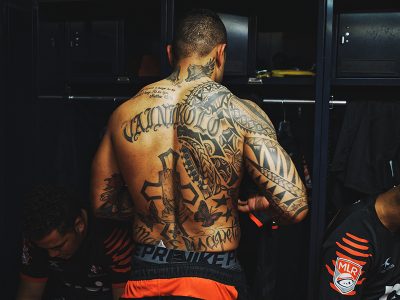
Wilson: My kit is mostly Olympus now. OM-D E-M1X for both action and studio work and OM-D E-M1 Mark II for documentary/behind-the-scenes. Just in love with these cameras—the colors straight out-of-camera are some of the best, and since they use variants of the same image sensor, I can use them in parallel, and the color matches up perfectly!
I haven’t shot film in many years. If I ever went back, probably Yashica T4 for its simplicity paired with a Zeiss 35 mm. fixed—hard to go wrong with that one.
Wilson’s passions for shooting and optimistic approach to his work make one appreciate all that our favorite photographers do to get the shot. Broken knuckles and all, Wilson does what it takes to get the shot, which is something I personally love to hear. Wilson is constantly shooting and putting work out there online and through social media. Check him out at daveywilson.com or on Instagram, @daveywilson. In the meantime, get inspired and get out shooting!
More on SLUGMag.com:
Salt Lake County Fair 5050 BMX Demo
The Men Behind the Lens: @Flatspotter
